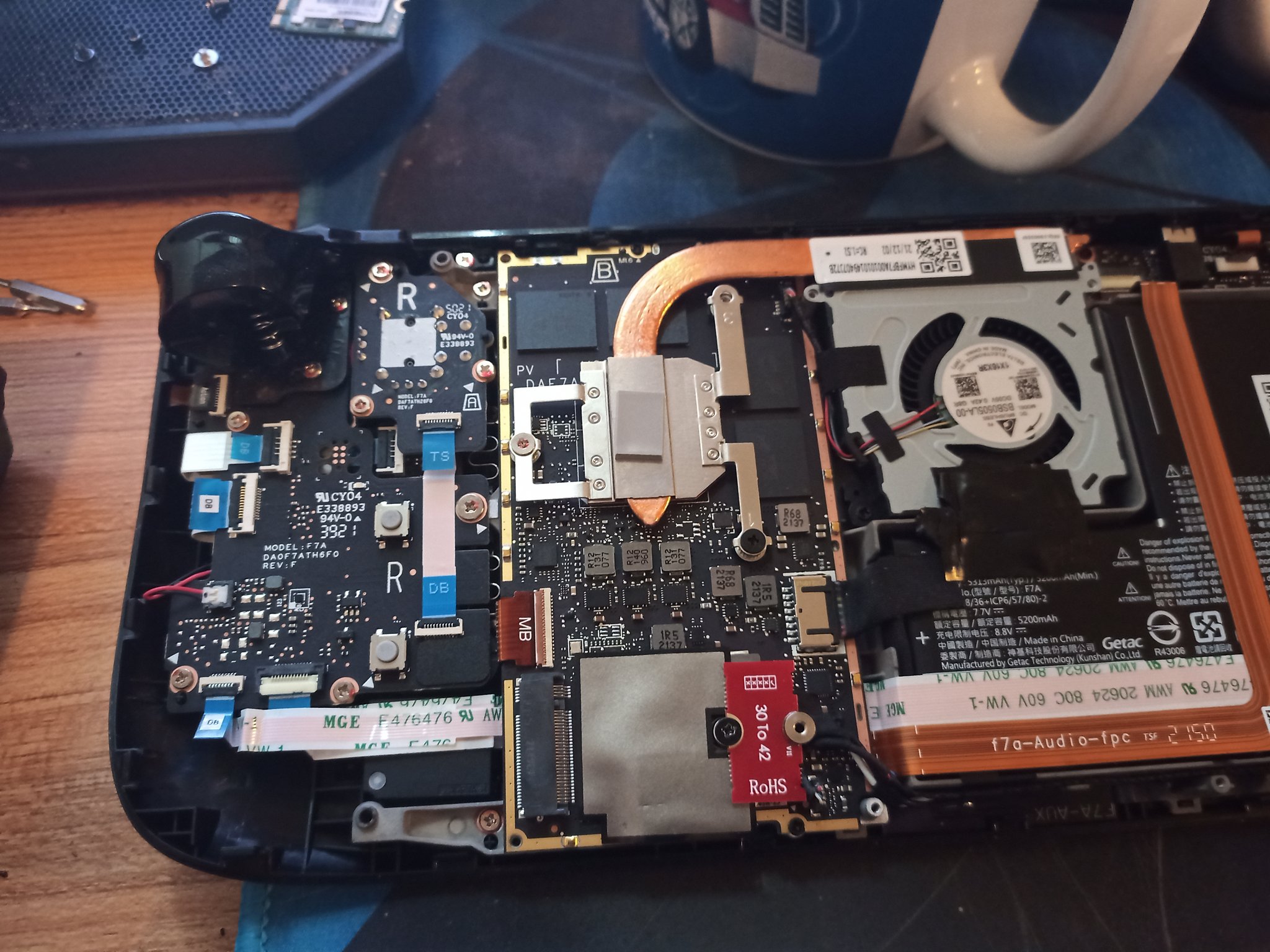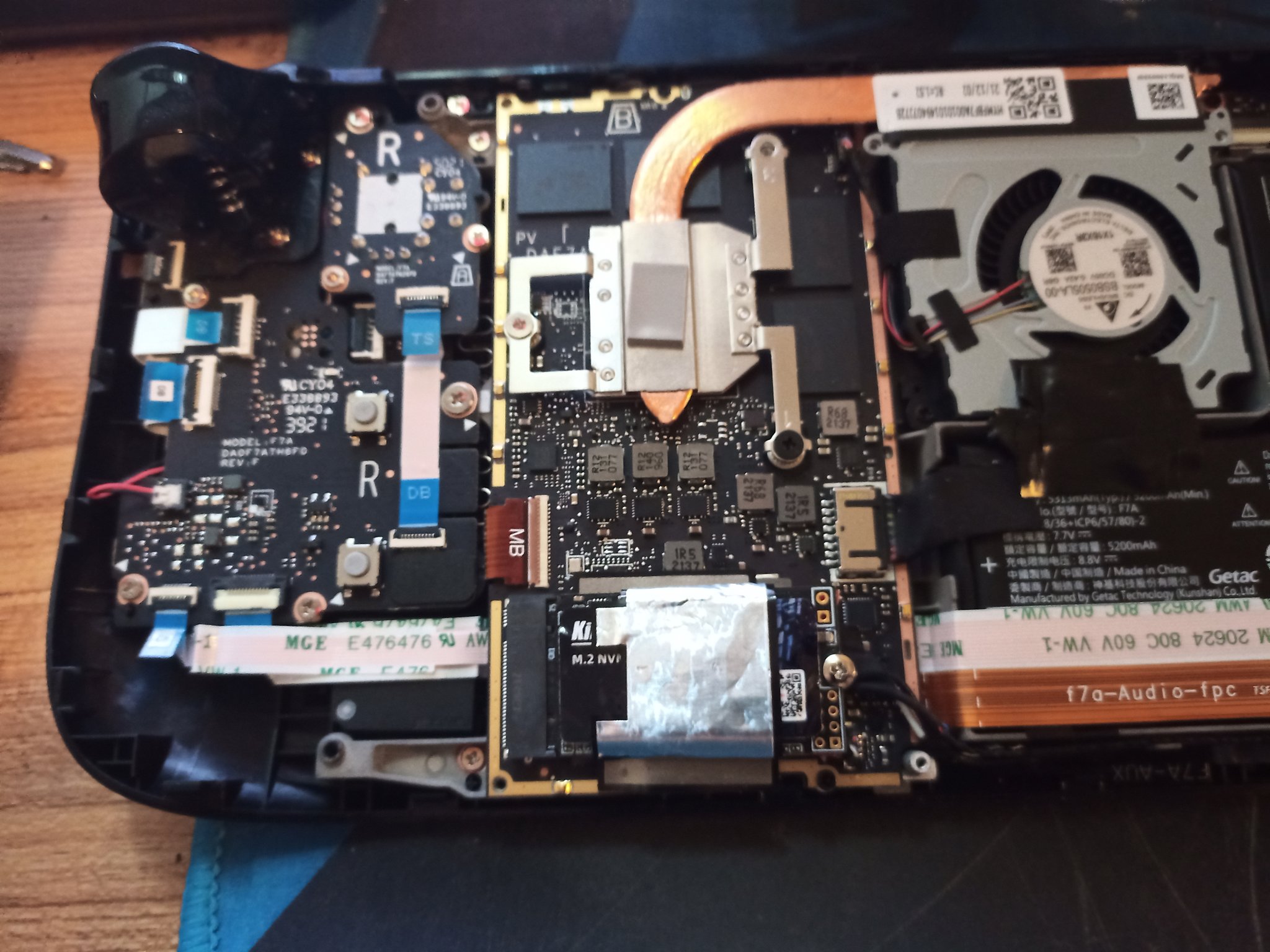It’s not a 100% secure solution, but it wouldn’t be a big surprise if Valve sees a sudden surge in demand for the lowest, 64 GB eMMC model…
Gabe Newell’s company has launched three versions of the Steam Deck. Valve is asking €420 ($400) for the entry-level 64 GB eMMC model, €550 ($530) for the mid-range version with 256 GB NVMe SSD, and €680 ($650) for the 512 GB version. However, if you want to cram more storage into your portable pc, you can, although Valve has previously warned us not to.
On Twitter, you can see that a Canadian modder has reached into the hardware to add a 2242 M.2 NVMe SSD to the Steam Deck (which originally has a 2230, so it’s slightly smaller). To quote him, “The PCB works fairly well for adapting a 2242 M.2 [NVMe SSD] to the Steam Deck. It doesn’t collide with anything on the motherboard or put extra strain on cables. However, it does make the heat spreader bow a tiny bit. The back plate reassembled without issue.” That means there could be overheating problems later…
The person packed a 512 GB KingSpec PCIe 3.0 x2 into the Steam Deck, which has a speed of about 1100 MB/s, which is not bad. Don’t bother with the 2280 SSDs, but the availability of the 2242s isn’t that bad, and you can easily cram a 1 TB SSD into the hardware. Of course, there are other ways to do the trick: just have a good-sized microSD card. We’ve seen tests before: the microSD load times were only about 2 seconds off, but most of the time, it was less than that, so there was not much noticeable difference between microSD and NVMe SSD.
The Steam Deck is relatively easy to disassemble, but before you do, take the microSD card out of the machine, as it could break. Also, don’t forget that you could risk voiding your warranty if you modify Valve’s device.
Source: PCGamer


















Leave a Reply